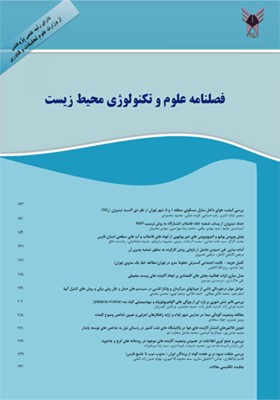کاوشی پیرامون تاثیر عبارت قرآنی " جَناتٌ تجَری مِن تحَتِها الاَنهار " بر باغ سازی ایرانی
محورهای موضوعی : مدیریت محیط زیست
1 -
2 -
کلید واژه: قرآن کریم, جَنات, باغ, باغ سازی, باغ ایرانی,
چکیده مقاله :
نقطة اوج تصویری که از بهشت در قرآن توصیف شده است، "جَناتٌ تجَری مِن تحَتهاِ الاَنهار " میباشد و به معنی بوستانهایی است که از زیر {درختان و قصرهای} آن جوی های آب جاری است. کلمه شجره در این عبارت به ظاهر وجود ندارد، اما در معنی حس می شود. درمجمع البیان ابوعلی امین الاسلام طبرسی آمده است که کلمة روضه به معنای زمین سبز و خرمی است که گیاهان به خوبی در آن میرویند و کلمة جنت زمینی است که اطرافش درختکاری شده باشد و در نتیجه روضاتالجنات باغ های مشجری است که در وسط، زمین سبز و خرمی را فرا گرفته باشد. بسیاری از باغ های ایران این ویژگی را دارند. اعداد و مفاهیمی مانند: چهار باغ، هشت بهشت، باغ در باغ، گردش آب و... ریشه در واژگان قرآنی دارند که به معماری و ترکیب بندی باغ های ایرانی و به تبع آن بسیاری از باغ های سایر کشورهای اسلامی و حتی اروپایی راه یافته اند ( تاثیر باغ سازی ایرانی در ورسای فرانسه والحمرای اسپانیا شاهدی براین گفتار است). اما موثرترین واژگان قرآنی بر باغ سازی ایرانی عبارت آسمانی "جَناتٌ تجَری مِن تحَتهاِ الاَنهار "می باشد. برخی مفسران و دین شناسان به تشریح این عبارت پرداخته اند و باغ های این جهان را مقدمه باغ بهشت دانسته اند. بسیاری از شاعران ایرانی و پارسی گوی، جهان را به کل به یک باغ تشبیه کرده اند و حتی بعضی مانند مولانا، جسم و روح انسان را به باغ تشبیه نموده اند. باغ سازان و معماران فراوانی تحت تاثیر این عبارت دست به خلاقیت زده اند تا فراتراز نمایش تاثیرپذیری خود از باغ های موصوف در قرآن، مانند آن را ایجاد نمایند. بی شک باغ بهشتی و یا به تعبیر قرآنی آن "جَناتٌ تجَری مِن تحَتهاِ الاَنهار " از جنس باغ های زمینی و انسان ساز است؛ با این تفاوت که: انسان در بهشت مهماندارش خداست، آن وقت ارزش بهشت برای او این نیست که آن جا خوردن و پوشیدن و لذت جنسی هست، ارزشش این است که تا ابد حس می کند به دست او پذیرایی می شود و این معنی، دیگر خستگی آور نیست.
The most beautiful description of Paradise in the Holy Koran is Jannaaton Tajri Men Tahtehal Anhaar which means "Gardens with beneath running streams". The word "tree" is not explicitly mentioned here, though it is implicitly understood. In Majma-ol Bayan by Abu Ali Amin-ol Eslam Tabarsi, we read that the word Roza means a green land in which plants grow well, and the word Jannat means a land with trees around it, and consequently Rowzaat-ol Jannaat (plural form of Rowzatol Jannat) are the gardens with trees in the middle of a green land. Many of the Persian gardens have these features. Numbers and concepts such as: Chahar Bagh (Four Gardens), Hasht Behesht (Eight Paradises), Bagh Dar Bagh (Garden in Garden), Gardesh Ab (Water Circulation), etc have their roots in the Koran terminology that gives ideas to architecture and composition of the Persian gardens and then many of the gardens in other Islamic and even the European countries. (The impact of Persian gardens in France and Spain is a proof of this claim and cannot be rejected.) However, the most effective Korans terms in Persian garden construction are Jannaaton Tajri Men Tahtehal Anhaar. Some of the annotators and theologists have clarified this phrase and considered the gardens of this world as an introduction to the Paradise. Many of the Iranian and Persian poets have compared the world to a whole garden and even some like Molavi have compared the human body and soul to a garden. Many garden builders and architectures were influenced by the mentioned Korans phrases which have tried to go beyond the described Korans gardens and created similar ones. Doubtlessly, paradise garden or with Korans terms Jannaaton Tajri Men Tahtehal Anhaar is similar to earthy, man-made gardens with the mere difference that "In Paradise, where the host of man is Allah, the worthiness is not that there are the gratification of eating, drinking and having sex, but eternally feeling that He hospitalizes you. And this is not exhausting"

